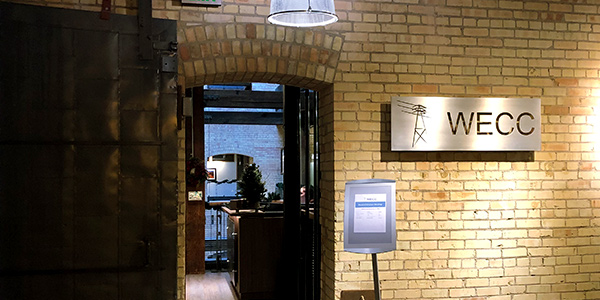WECC stakeholders expressed their displeasure Tuesday with a revised proposal to revamp its committee structure and appoint a new Committee Review Body (CRB) to oversee its working committees and report to the board.
The regional entity for the Western Interconnection is holding workshops this month to discuss a third version of its plan to streamline its committee structure and create the CRB, pronounced “CARB.”
Offering a “gut reaction” to the CRB proposal, Lorissa Jones-Cardoza, transmission reliability program manager at the Bonneville Power Administration and a member of WECC’s Member Advisory Committee (MAC), said, “We don’t feel that it’s appropriate that the CRB be the only venue to the board.”
She recommended that other standing committees, including the MAC, should have “individual voices to the board, not have everything funneled to the CRB. It feels like an extra layer and a removal of that direct conversation and feedback that the various working groups get from the board.”
Fred Heutte, Northwest Energy Coalition senior policy associate and member of the MAC, said, “I have mixed feelings about the CRB — defining what its scope is, what its authority is and the usual issues of who’s on it and [its voting role and procedures]. I’m not a big fan — at this point — of the idea.”
WECC needs to balance the “self-determination” of its expert stakeholder committees — “the ability to develop and progress along the path of their approach in considering issues and input and doing assessment” — with the “need for coordination across different groups,” Heutte said.
“What’s the right amount of top-down coordination or direction versus the ability of the different bodies to do their thing and yet have a cohesive result that brings good results back up the chain to whatever level of reporting and outputs that we’re looking for?” he said.
Victoria Ravenscroft, WECC senior policy and external affairs manager and the moderator of Tuesday’s session, asked stakeholders to identify good aspects of the CRB. She was met with dead silence. “Uh, oh, that’s not good,” Ravenscroft said.
So far, the efforts of WECC’s Stakeholder Engagement Task Force (SETF) have faced resistance.
An initial straw proposal in October prompted numerous stakeholder concerns and resulted in a heavily revised proposal in November, followed by Version 3 in February.
The latest revised straw proposal offered a new take on how committees would be configured after the shakeup, which WECC hopes to implement in September.
It includes a plan to combine two major oversight groups, the Operating (OC) and Market Interface (MIC) committees, into a new Reliability Risk Committee (RRC), which would report to the CRB along with the existing Reliability Assessment Committee (RAC). The prior plan called for retiring the OC, MIC and RAC.
It maintains Version 2’s proposal to establish the CRB to “ensure [WECC’s working] committees are delivering relevant and timely work products to the appropriate audiences.” (See WECC Overhauls, Expands Stakeholder Committee Plan.)
The CRB would consist of representatives from WECC management, the RAC, RRC, MAC and others, according to the newest plan. It will report to the board, oversee the RAC and RRC, review and manage WECC’s stakeholder committee structure, and “identify the need for, and when necessary, initiate work to meet WECC’s strategic objectives,” the plan states.
The SETF is scheduled to deliver a final proposal to the board between June and August.



